By Dan Weisz
For a few weeks now, I’ve been seeing photos posted on social media of a male Hooded Merganser in the Tucson area at Agua Caliente Park. I finally had my opportunity to go there and was promptly rewarded with great looks of a spectacular bird. Hooded Merganser males have a large crest of head feathers, a ‘hood’, that can be raised or lowered. When raised, the hood provides the duck with a flamboyant oversized head.
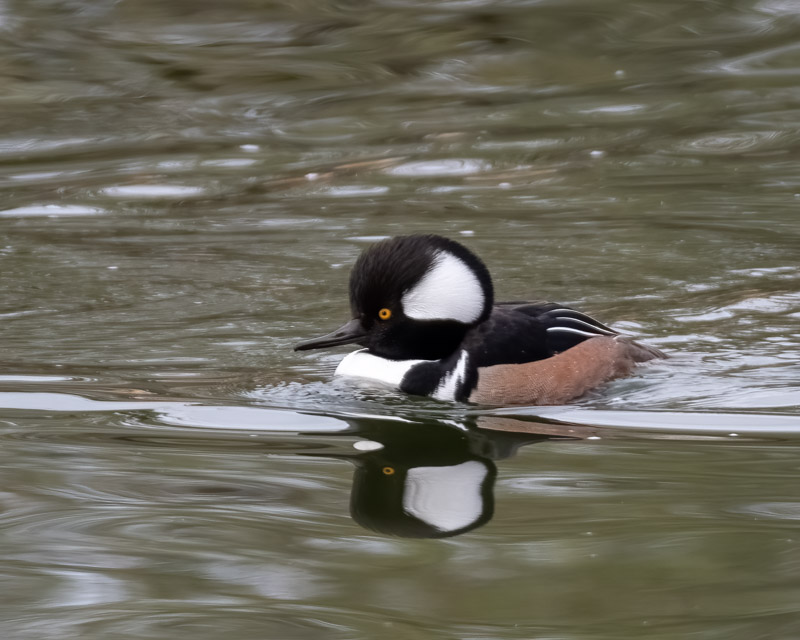
Hooded Mergansers have a variety of behaviors that seem exaggerated due to their hood. Here, the Merganser is throwing his head back. From this angle his head looks very slim, contrasting the view from the side. You can see how narrow the Hooded Merganser’s long slender bill is especially compared to the bills of most other ducks.
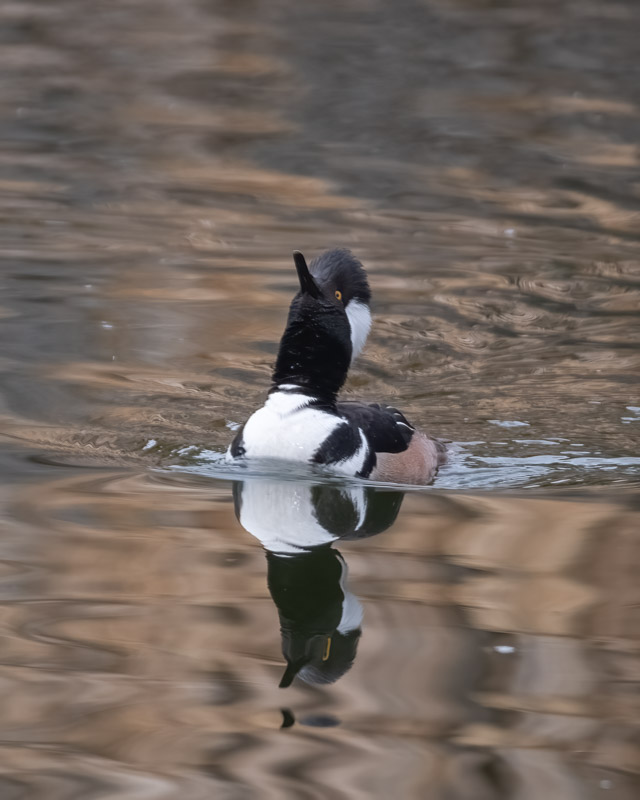
Here is a look at the Hooded Merganser coming straight at me, hood crest raised.
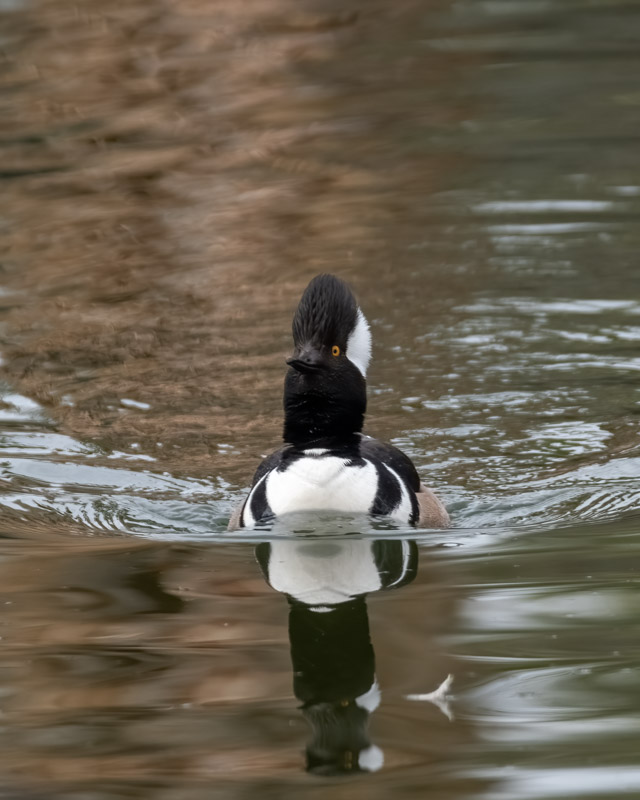
The Hooded Merganser is a small duck but more than makes up for its size with its looks and attitude. Here he is getting ready for some showy behavior and his tail is out of the water.
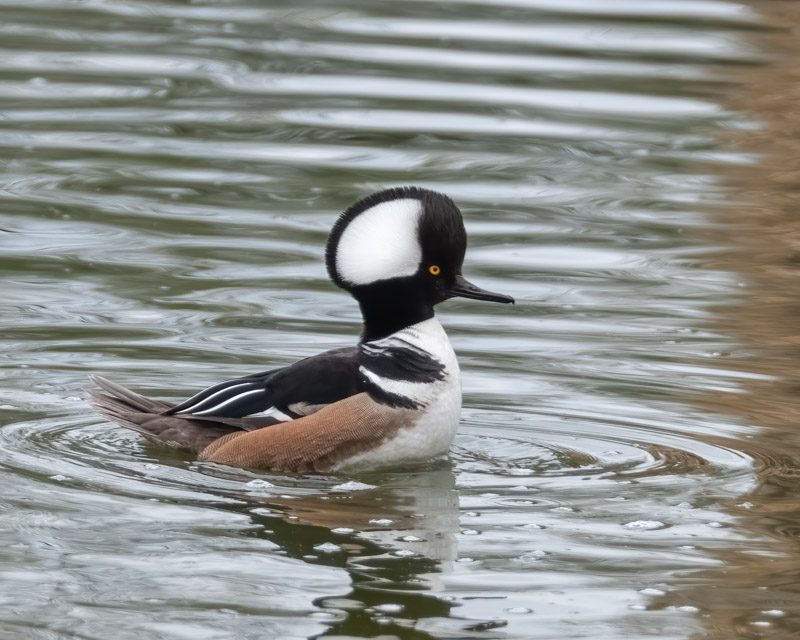
He takes a bow!
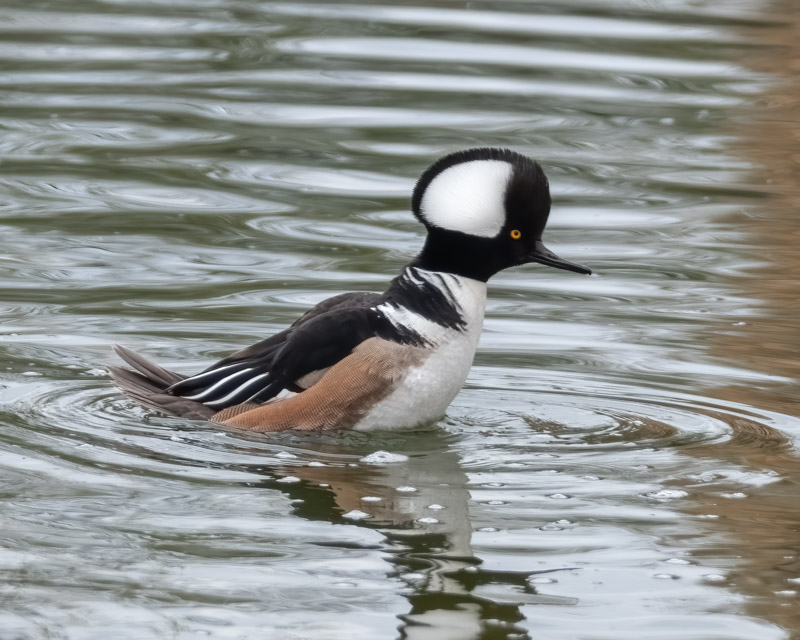
And then he rears back, raising his chest way out of the water.
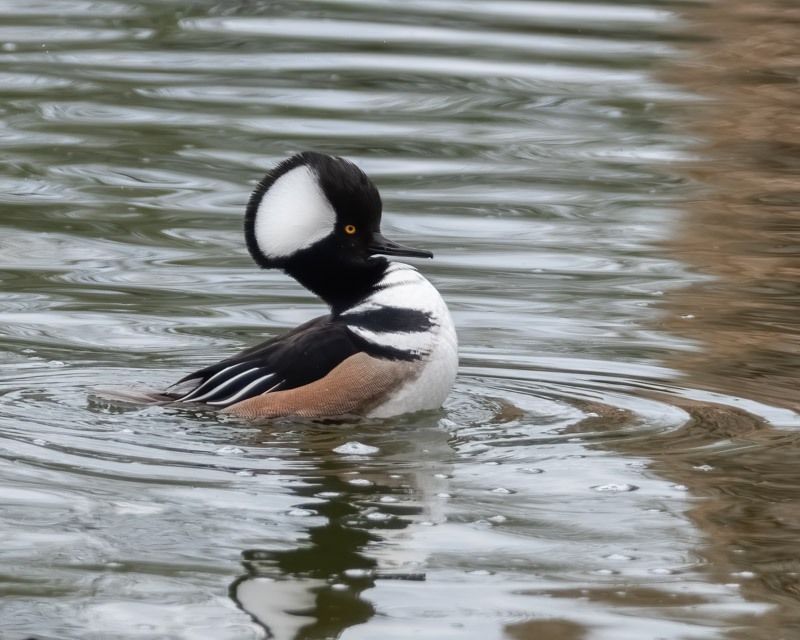
He then settles back down and continues swimming.
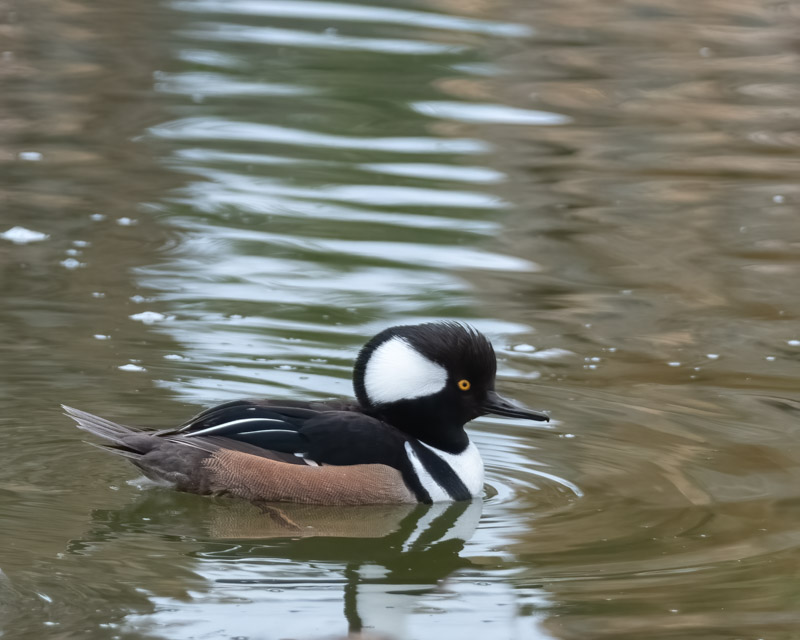
There were some fallen plants or weeds at the side of the island. When the nearby humans stepped back, the ducks would walk onto land to feed. In the photo below, the Merganser is feeding on seeds and plant material. Notice how far back his feet and legs are. They are not under the middle of his body. The duck’s legs are so far back which helps when it is diving under water for food but it makes for awkward walking on land. Much of the Merganser’s diet is aquatic: small insects, small fish, crustaceans, mollusks, etc., but it also eats vegetation. The Mallard in the background is waiting for its turn on land.
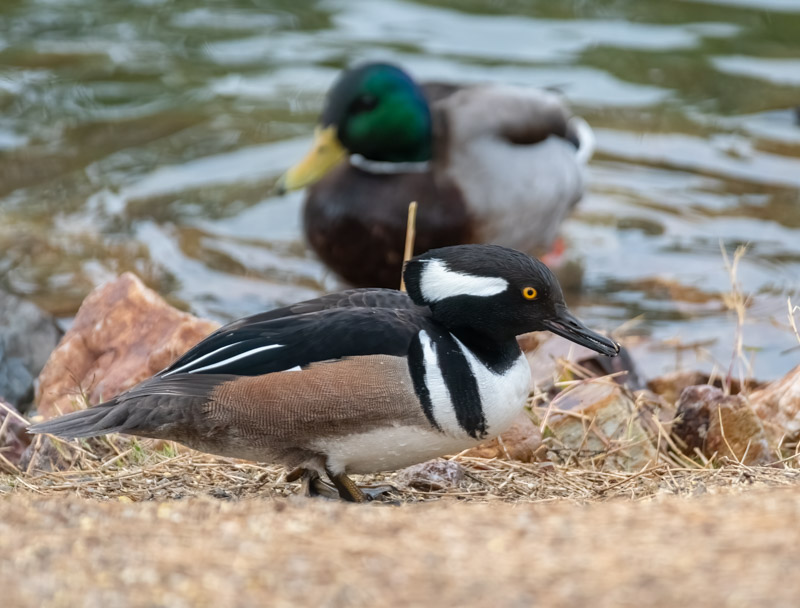
In the photo above and below, the Merganser has its hood/crest flattened on its head. The shape of the feathers as seen by the white portion is very different from when the crest is fanned out.
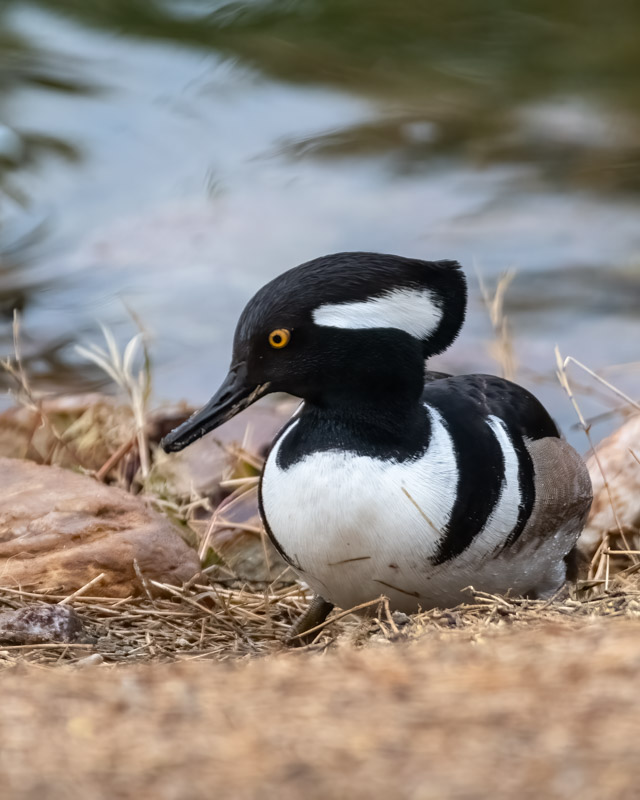
A close-up of the inside of the Hooded Merganser’s mouth reveals a serrated beak. That bill aids the duck in capturing and holding on to aquatic prey items captured underwater, which it then swallows whole.
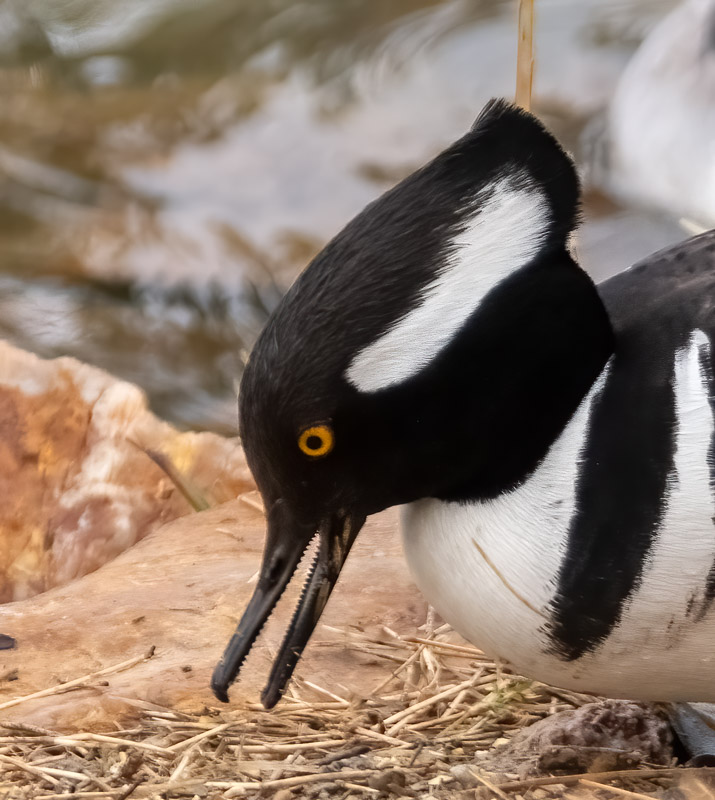
The Hooded Merganser is eating the vegetation on land but the shot below shows another important feature. You can see the bird’s nictitating membrane beginning to cover its eye. That third eyelid is translucent, and when the Hooded Merganser is swimming underwater in search of prey the membrane allows the duck to see underwater. That nictitating membranes serve as a kind of goggles for the duck when it is underwater.
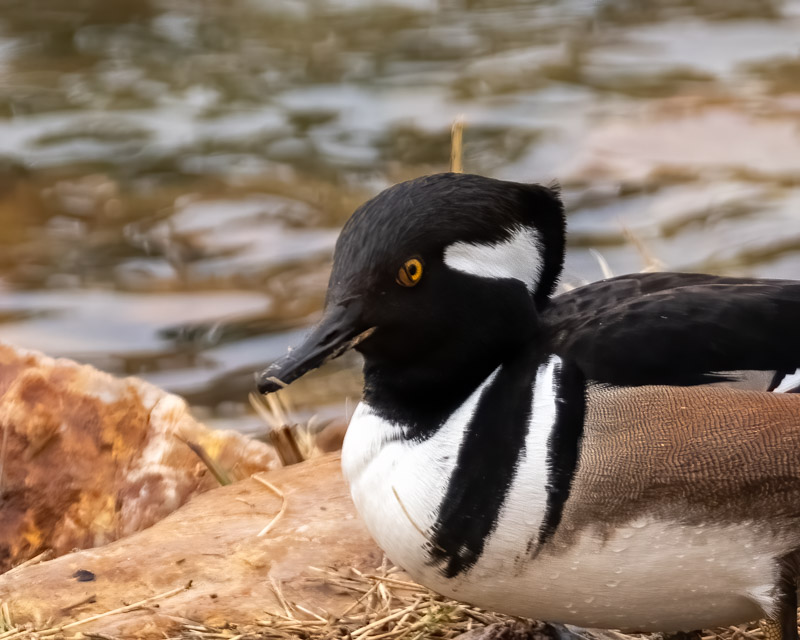
I returned to the lake after walking around the park. By then, the Hooded Merganser had swum to the back of the pond and was resting behind a fallen cottonwood tree. This is what a winter pond in southern Arizona looks like!
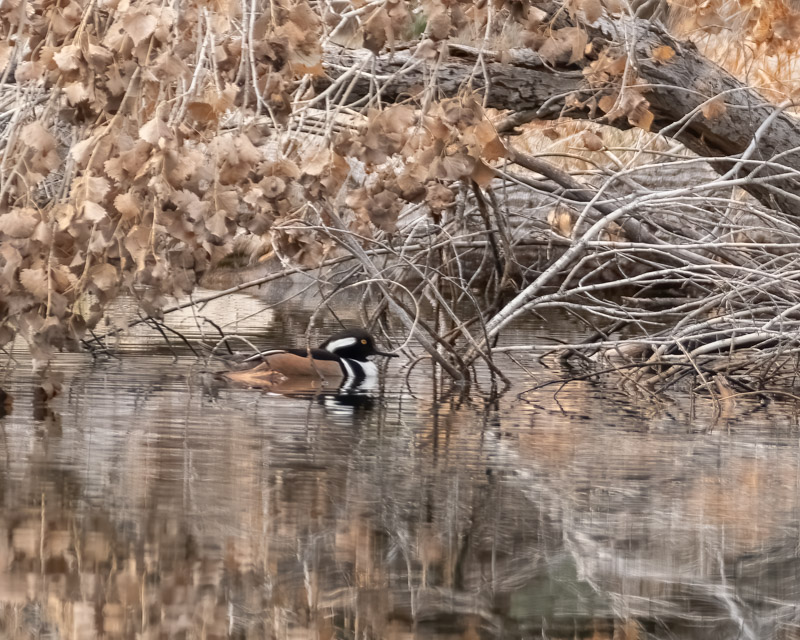
Hooded Mergansers are visitors to southern Arizona in the winter. They are uncommon, but there seem to always be a few in the Tucson area. For more on Hooded Mergansers, listen to this Birdnote piece: https://www.birdnote.org/listen/shows/hooded-merganser
While we don’t have Hooded Mergansers in southern Arizona during breeding season, some of the breeding habits of Hooded Mergansers are very interesting. They are cavity nesters but that is not the only interesting feature about their nesting activity. For more, here is another nice piece on Birdnote: https://www.birdnote.org/listen/shows/just-whose-ducklings-are-those
